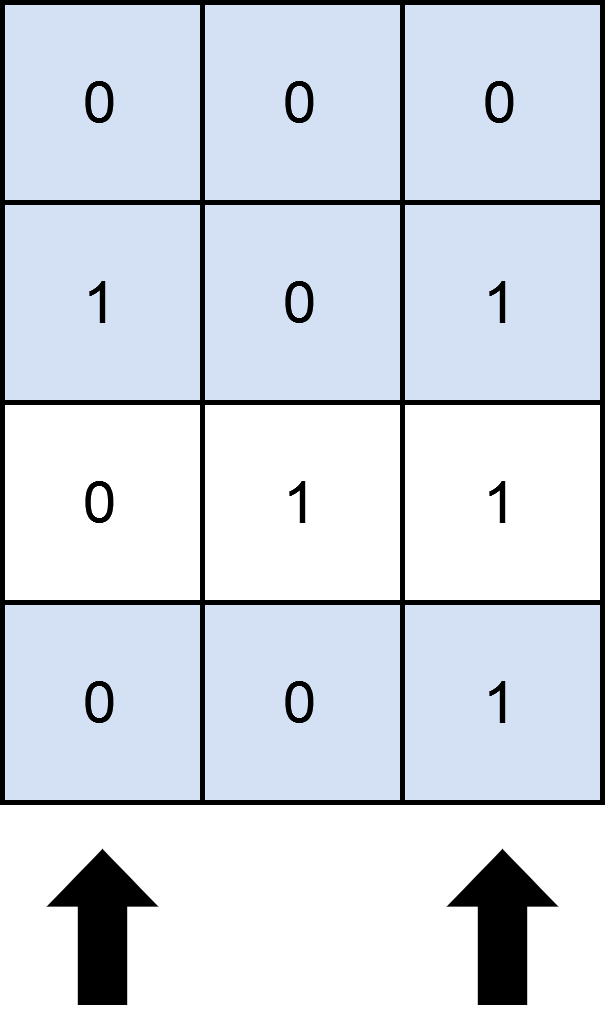Class Solution
- java.lang.Object
-
- g2301_2400.s2397_maximum_rows_covered_by_columns.Solution
-
public class Solution extends Object
2397 - Maximum Rows Covered by Columns.Medium
You are given a 0-indexed
m x nbinary matrixmatrixand an integernumSelect, which denotes the number of distinct columns you must select frommatrix.Let us consider
s = {c1, c2, …., cnumSelect}as the set of columns selected by you. A rowrowis covered bysif:- For each cell
matrix[row][col](0 <= col <= n - 1) wherematrix[row][col] == 1,colis present insor, - No cell in
rowhas a value of1.
You need to choose
numSelectcolumns such that the number of rows that are covered is maximized.Return the maximum number of rows that can be covered by a set of
numSelectcolumns.Example 1:

Input: matrix = [[0,0,0],[1,0,1],[0,1,1],[0,0,1]], numSelect = 2
Output: 3
Explanation: One possible way to cover 3 rows is shown in the diagram above.
We choose s = {0, 2}.
-
Row 0 is covered because it has no occurrences of 1.
-
Row 1 is covered because the columns with value 1, i.e. 0 and 2 are present in s.
-
Row 2 is not covered because matrix[2][1] == 1 but 1 is not present in s.
-
Row 3 is covered because matrix[2][2] == 1 and 2 is present in s.
Thus, we can cover three rows.
Note that s = {1, 2} will also cover 3 rows, but it can be shown that no more than three rows can be covered.
Example 2:

Input: matrix = [[1],[0]], numSelect = 1
Output: 2
Explanation: Selecting the only column will result in both rows being covered since the entire matrix is selected.
Therefore, we return 2.
Constraints:
m == matrix.lengthn == matrix[i].length1 <= m, n <= 12matrix[i][j]is either0or1.1 <= numSelect <= n
- For each cell
-
-
Constructor Summary
Constructors Constructor Description Solution()
-
Method Summary
All Methods Instance Methods Concrete Methods Modifier and Type Method Description intmaximumRows(int[][] matrix, int numSelect)
-